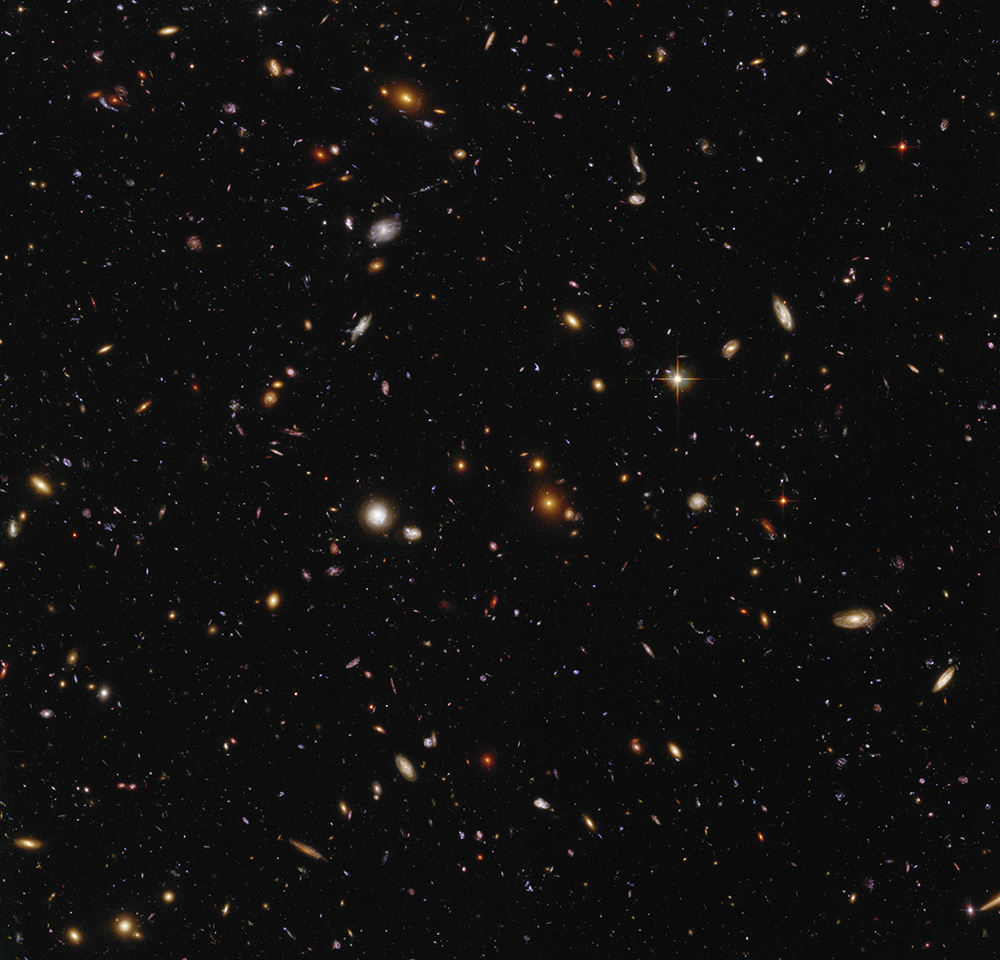
Abell 2744 Parallel Field 1 (2014)
This picture uses the final (or, at least, 1.0) data from the Frontier Fields parallel observations of Abell 2744. Previously I had used some data that were released something like halfway through (see here, if you’d like). There is more signal and that makes processing easier but besides that I think my processing and color balance is also better this time around.
Besides giving us another sample of the deep universe, this field is also useful to compare to the nearby strongly lensing cluster Abell 2744. For this field there is no massive cluster and therefore little lensing (I won’t say there is none) going on so it can give you an idea of what’s behind the cluster. You also have to take into account that the gravity lens magnifies those tiny blips in addition to warping them so they may appear dimmer here or otherwise not be visible. It’s hard for me to say. I’ll leave the math and the models to the professionals. Anyway, you get the idea. You could say this is analogous to the control group in an experiment but it requires the assumption that there is nothing terribly unusual going on with the background galaxies here or in the lensing field.
Looking at this chart, it seems that this field received significantly more orbits for F435W and F606W channels. I’m a little confused about how that worked out; baffled, even.
These datasets can be found here.
Red: hlsp_frontier_hst_acs-30mas-selfcal_abell2744-hffpar_f814w_v1.0_drz
Green: hlsp_frontier_hst_acs-30mas-selfcal_abell2744-hffpar_f606w_v1.0_drz
Blue: hlsp_frontier_hst_acs-30mas-selfcal_abell2744-hffpar_f435w_v1.0_drz
North is NOT up. It is 36.9° counter-clockwise from up.
Copyright information:
Hubble data is public domain, but I put a lot of work into combining it into beautiful color images. The minimal credit line should read: NASA / ESA / J. Schmidt

This work is licensed under a Creative Commons Attribution 3.0 Unported License.


